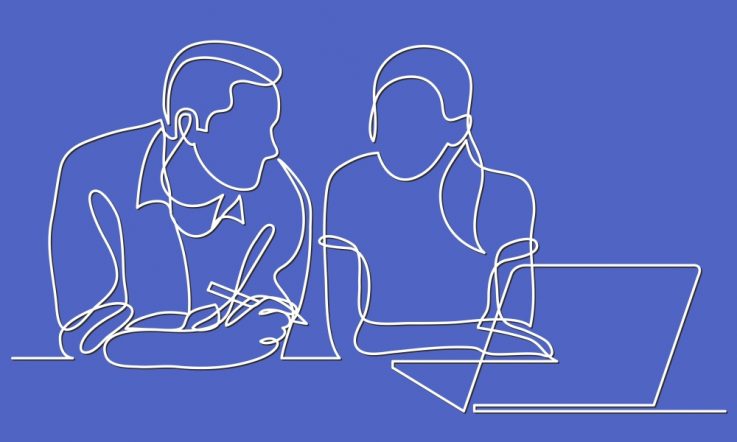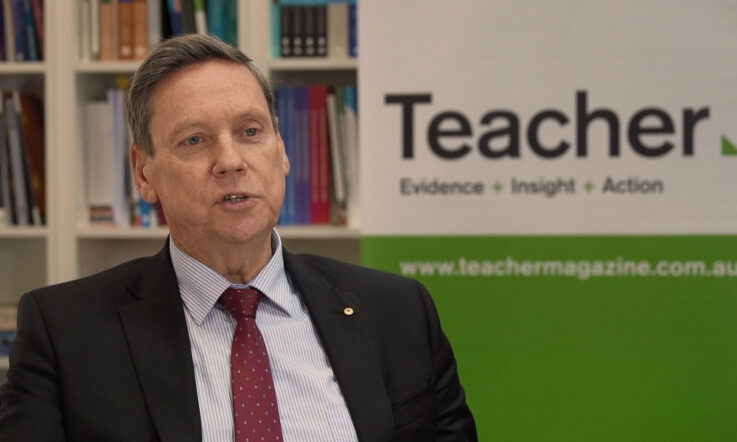The term ‘evidence-based practice’ is widely used in education. Schools are continually presented with strategies, programs and approaches that claim to be ‘research-based’ or ‘evidence-based’. But what is evidence-based practice? And, how do schools determine which of these programs and methods have solid foundations in research?
Last year, the Monash Q Project surveyed almost 500 practitioners from 414 schools across New South Wales, Victoria, South Australia and Queensland to understand how Australian educators find and use research and evidence in their practice.
They found 83 per cent of educators believe that using research will help improve student outcomes; but 45 per cent believe that their schools do not support the use of research by making enough time available. In addition, 32 per cent of educators do not feel confident to analyse and interpret research.
So, how can educators better understand what evidence-based practice is exactly? The Australian Education Research Organisation (AERO) explains evidence is any type of information that supports an assertion, hypothesis or claim. ‘There are many types of evidence in education, including insights drawn from child or student assessments, classroom observations, recommendations from popular education books and findings from research studies and syntheses.’
AERO refers to two types of evidence in its work. The first is research evidence, which uses rigorous methods to provide insights into educational practice. The other is practitioner-generated evidence. Teachers generate this evidence though their daily practice. It can include things like teacher observations, information gathered from formative or summative assessments, or from student feedback.
What research tells us is effective practice for particular purposes
Domain eight of the National School Improvement Tool focuses on effective pedagogical practices. It explains that evidence-based teaching strategies are those that have been demonstrated through research and practice to be highly effective. For a school to achieve an ‘outstanding’ performance level in this domain, all teachers and leaders need to be committed to identifying, understanding and implementing better teaching methods, and give a high priority to evidence-based teaching strategies.
‘The school principal and other school leaders recognise that highly effective teaching is the key to improving student learning throughout the school,’ the tool says. ‘They take a strong leadership role, encouraging the use of research-based teaching practices in all classrooms to ensure that every student is engaged, challenged and learning successfully. All teachers understand and use effective teaching methods – including explicit instruction – to maximise student learning.’
The Australian Institute for Teaching and School Leadership (AITSL) agrees that strategies implemented in schools to maximise student learning should be evidence-based.
‘Expanding the skill to recognise quality research is essential to help teachers and school leaders become better evaluators and consumers of evidence,’ it says in this issue of Spotlight. ‘It can sometimes be difficult to distinguish practices that are robustly supported by research from those that are based on more limited findings. Knowing what questions to ask when engaging with research can help build confidence in using evidence in practice.’
In John Hattie’s work on evidence-based teaching and learning, he says that nearly everything done in the classroom enhances achievement, thus any teacher claiming that they can show evidence of enhanced learning is not saying much.
Hattie established effect-sizes for over 100 major innovations from over 300 000 studies. In this model, zero is when there is no effect on achievement, a negative effect is when the innovation reduces achievement, and a positive is when the innovation enhances achievement. ‘The critical question is whether we can implement those effects that enhance achievement by more than the average (.40 effect-size). Anything less is holding back a student, as at least half the effects can attain growth greater than .40,’ Hattie explains.
Gathering evidence to understand student needs
In his Teacher column on the role of evidence in teaching and learning, Professor Geoff Masters AO says improvements in student learning and educational outcomes depend on the wider use of reliable evidence in classroom practice.
Masters says that evidence-based teaching involves the use of evidence to: (1) establish where students are in their learning; (2) decide on appropriate teaching strategies and interventions; and (3) monitor student progress and evaluate teaching effectiveness.
To do this, the educator should ask: is this approach working? It is improving learning for my students? Is it having the desired impact? A key part of gathering evidence is also knowing where to pitch your program and then monitoring whether it is actually working.
‘[Effective teachers] use evidence of progress to assess the adequacy of an individual’s learning, to intervene when progress is inadequate and to evaluate the effectiveness of their own teaching strategies and interventions,’ Masters says. ‘In using evidence in these ways, highly effective teachers work with colleagues to build knowledge about better ways to use evidence to promote every student’s growth.’
The Australian Professional Standards for Teachers outline how teachers should be using evidence-based strategies in their practice to better understand students. According to the standards, Proficient Teachers should ‘evaluate personal teaching and learning programs using evidence, including feedback from students and student assessment data, to inform planning’. Lead Teachers should ‘conduct regular reviews of teaching and learning programs using multiple sources of evidence including: student assessment data, curriculum documents, teaching practices and feedback from parents/carers, students and colleagues’.
Evidence-based practice
So what is evidence-based practice?
According to Masters, effective teachers use quality evidence to establish the points individual learners have reached in their learning. This enables teachers to identify starting points for further teaching and learning and to ensure that each student is given learning opportunities at an appropriate level of challenge.
‘The process of establishing and understanding where students are in their learning often requires detailed diagnostic evidence of individual misunderstandings and obstacles to learning progress,’ Masters writes.
Highly effective teachers also have a repertoire of evidence-informed teaching strategies and select from these to engage individual students, set ambitious but realistic learning goals, and target teaching to address individual learning needs. ‘Effective teachers use evidence to monitor the progress individuals make in their learning over extended periods of time,’ Masters adds.
As a teacher, how confident do you feel to analyse and interpret educational research? What forms of evidence do you use to establish where students are in their learning and the progress they’ve made?
As a school leader, how do you ensure that staff have access to the latest research and evidence-based practice in education? Are staff given enough time to stay abreast of this material?



